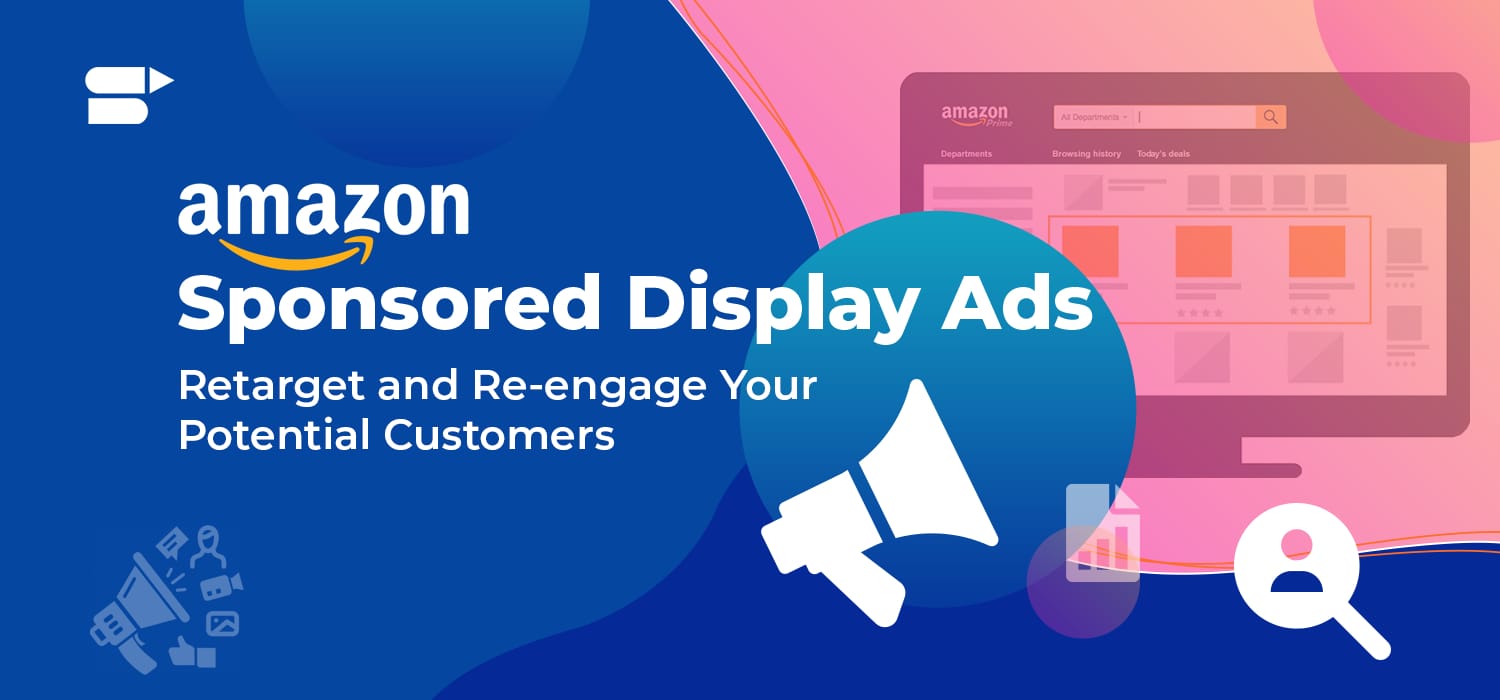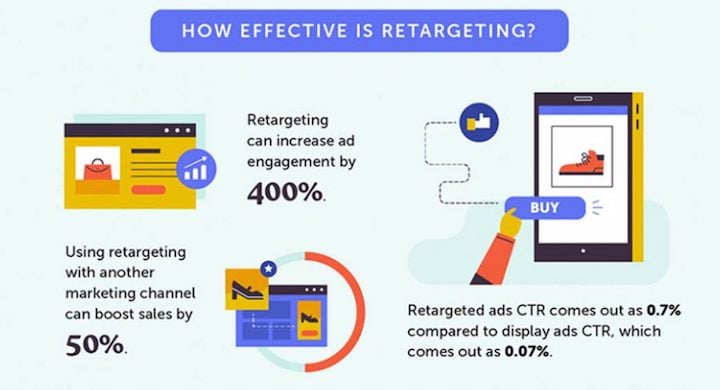re marketing

1. Definition and concept of remarketing
Remarketing, also known as retargeting, is a digital marketing strategy that involves targeting individuals who have already interacted with your website or brand in some way. It focuses on reaching out to these potential customers again, reminding them of your products or services, and encouraging them to take a desired action, such as making a purchase or completing a conversion.
2. Benefits of implementing remarketing campaigns
Implementing remarketing campaigns can bring several benefits to your business. Here are a few key advantages:
- Increased conversion rates: Remarketing allows you to target individuals who have already shown interest in your brand, increasing the likelihood of them converting into paying customers.
- Improved brand awareness: By consistently reminding potential customers of your brand, you can increase brand recognition and strengthen your presence in their minds.
- Cost-effective advertising: Remarketing campaigns tend to have lower costs compared to other forms of advertising, providing a cost-effective way to reach potential customers.
- Personalized customer experiences: By tailoring your remarketing ads to specific interests or actions taken by individuals, you can create a personalized customer experience that resonates with them.
- Increased customer loyalty: By staying engaged with past customers through remarketing, you can enhance customer loyalty and encourage repeat business.
3. How remarketing works and its key components
Remarketing works by using website tracking technologies, such as cookies, to identify individuals who have visited your website. These individuals are then targeted with tailored ads as they browse other websites, social media platforms, or apps. Key components of a remarketing campaign include setting up audience lists, creating compelling ads, and monitoring campaign performance to make data-driven optimizations.
By implementing remarketing strategies, businesses can effectively engage with potential customers, increase conversions, and build stronger brand relationships.

Strategies for Effective Remarketing
1. Segmenting your audience for targeted remarketing
Segmenting your audience is crucial for effective remarketing. By dividing your audience into different groups based on their behavior and interests, you can create personalized ads that are more likely to resonate with them. This could include targeting specific demographics, retargeting website visitors who abandoned their shopping carts, or reaching out to customers who have previously made a purchase.
2. Creating compelling ad content and designs for remarketing
To capture the attention of your audience, it’s important to create compelling ad content and designs for your remarketing campaigns. Use persuasive language, highlight the benefits of your products or services, and include stunning visuals that grab attention. Targeted ads that remind customers of products they viewed or left behind can be particularly effective in encouraging them to complete their purchase.
3. Setting up effective remarketing campaigns on different platforms
Utilize different advertising platforms to set up your remarketing campaigns. Platforms like Google Ads, Facebook Ads, and LinkedIn Ads offer remarketing capabilities that enable you to reach your audience across multiple channels. Set up custom audiences or remarketing lists based on specific criteria, such as website visits, engagement with your content, or previous purchases. Tailor your campaigns to each platform’s unique features to maximize their effectiveness.
By implementing these strategies, you can make the most out of your remarketing efforts and increase your chances of converting potential customers. Remember to continuously monitor and optimize your campaigns to ensure they are delivering the desired results.

Maximizing ROI with Remarketing
1. Analyzing remarketing campaign performance and metrics
To maximize your return on investment (ROI) with remarketing, it is crucial to analyze the performance and metrics of your campaigns. By closely monitoring data such as click-through rates, conversion rates, and cost per conversion, you can identify which ads and audiences are generating the best results. This information allows you to optimize your campaigns and allocate your resources effectively.
2. Optimizing ad frequency and timing for better results
One common mistake in remarketing is bombarding users with ads, which can lead to ad fatigue and annoyance. Instead, it is important to find the right balance and optimize your ad frequency. By testing different frequencies and monitoring user responses, you can determine the optimal number of impressions per user, ensuring your ads are seen without overwhelming your audience. Timing is also crucial, as showing your ads at the right moment can significantly improve conversion rates.
3. Implementing dynamic remarketing for personalized ads
Dynamic remarketing takes personalization to the next level by showing users ads that are tailored to their specific interests and behavior. By utilizing data such as products viewed or added to cart, you can create dynamic ads that display the exact items a user has shown interest in. This level of personalization not only increases the effectiveness of your ads but also enhances the overall user experience, leading to higher engagement and conversions.
Remember, remarketing is a powerful tool for reaching potential customers who have already shown interest in your brand or products. By analyzing campaign performance, optimizing ad frequency and timing, and implementing dynamic remarketing, you can maximize your ROI and achieve better results with your remarketing efforts.

Remarketing Best Practices
1. Building strong landing pages and conversion funnels
Building strong landing pages and well-designed conversion funnels is crucial for successful remarketing campaigns. Ensure that your landing pages are visually appealing, user-friendly, and optimized for conversions. Make it easy for visitors to take the desired action and provide compelling content to keep them engaged. By creating a smooth and seamless user experience, you increase the chances of converting your remarketing audience into paying customers.
2. Utilizing remarketing lists for better ad targeting
To maximize the effectiveness of your remarketing ads, utilize remarketing lists that are segmented based on specific user actions. By targeting users who have already shown interest in your products or services, you can create personalized and relevant ads that resonate with their needs. This targeted approach improves your ad’s visibility and increases the likelihood of conversions.
3. A/B testing and experimentation for improved remarketing performance
Continuous A/B testing and experimentation are key to enhancing your remarketing performance. Test different ad formats, messaging, visuals, and calls-to-action to identify what works best for your target audience. By analyzing and optimizing your campaigns based on data-driven insights, you can refine your marketing strategies and achieve better results. Experimenting with different variables allows you to uncover new opportunities and improve the effectiveness of your remarketing efforts.
Remember, remarketing is about re-engaging and reconnecting with your audience. By implementing these best practices, you can optimize your remarketing campaigns and drive better results for your business.

Overcoming Remarketing Challenges
In today’s digital age, remarketing has become an essential tool for businesses to reconnect with potential customers who have previously shown interest. However, it’s not without its challenges.
1. Dealing with ad fatigue and audience saturation
One of the main challenges in remarketing is ad fatigue and audience saturation. When users see the same ads repeatedly, they may become immune to them or find them annoying. To overcome this, businesses need to:
- Create diverse ad creative: Developing a variety of ad formats, designs, and messaging can keep your ads fresh and engaging.
- Implement frequency caps: Setting limits on the number of times an ad is shown to an individual can prevent audience saturation.
- Segment your audience: Tailoring ads based on user behavior, interests, or demographics can make them more relevant and appealing.
2. Addressing privacy concerns and data protection regulations
With increasing concerns over privacy and data protection, businesses must navigate the legal and ethical aspects of remarketing. Here are some strategies to address these concerns:
- Obtain proper consent: Ensure that you have obtained explicit consent from users to collect and use their data for remarketing purposes.
- Transparent data practices: Clearly communicate how user data is being collected, stored, and used, and provide opt-out options.
- Comply with regulations: Stay up to date with privacy laws and regulations, such as the General Data Protection Regulation (GDPR) in the European Union, and adhere to their requirements.
3. Strategies for integrating remarketing with other marketing channels
To maximize the effectiveness of remarketing, businesses should integrate it with other marketing channels. Here are some strategies to achieve this:
- Coordinate messaging: Ensure consistency in messaging across remarketing ads, social media, email campaigns, and other channels.
- Use cross-channel tracking: Implement tracking mechanisms to understand how users interact with different channels and optimize campaigns accordingly.
- Experiment with cross-channel campaigns: Explore opportunities to reinforce your brand message by combining remarketing with other channels, such as display ads and social media advertising.
By overcoming these challenges, businesses can leverage the power of remarketing and effectively reconnect with potential customers, increase conversions, and grow their business.

Conclusion
In conclusion, remarketing is a powerful strategy that can help businesses increase conversions and retain customers. By recapping the key points and best practices, continuously monitoring and optimizing campaigns, and understanding the value of remarketing, businesses can leverage this tactic to its full potential.
1. Recap of key points on remarketing strategies and best practices
- Define your goals and target audience: Understand who you want to target and what actions you want them to take.
- Create compelling and personalized ads: Tailor your ads to resonate with your audience and showcase relevant products or offers.
- Set up proper tracking and segmentation: Use tools like Google Analytics to track user behavior and segment your audience for more effective targeting.
- Test and optimize your campaigns: Continually analyze data and make adjustments to improve performance.
2. The importance of continuously monitoring and optimizing remarketing campaigns
Remarketing is not a one-time setup and forget strategy. It requires ongoing monitoring and optimization to maximize results. Regularly check your campaign performance, adjust bids, update ad creatives, and refine targeting to ensure you are reaching the right audience with the right message.
3. Final thoughts on the value of remarketing in driving conversions and customer retention
Remarketing allows businesses to stay top of mind with potential customers and re-engage past customers, increasing the chances of converting them into repeat buyers. It also helps build brand loyalty and customer lifetime value. By implementing effective remarketing strategies and continuously improving them, businesses can benefit from higher conversions, increased sales, and improved customer retention.
Remarketing is a type of digital marketing that targets people who have already visited your website or interacted with your brand in some way. It allows you to stay top-of-mind with potential customers and encourage them to take action, such as making a purchase, signing up for your email list, or downloading a white paper.
There are a number of different ways to implement remarketing campaigns. One common approach is to use retargeting ads. These are ads that are displayed to people who have visited your website but have not made a purchase. Retargeting ads can be displayed on a variety of websites, including social media platforms, search engines, and other websites that your target audience frequents.
Another way to implement remarketing is to use email marketing. You can send targeted emails to people who have visited your website or abandoned their shopping carts. These emails can remind people about your products or services, offer discounts or promotions, or provide additional information that may be helpful to them.
Remarketing can be a very effective way to increase brand awareness, generate leads, and drive sales. However, it is important to use it carefully and ethically. You should only target people who have already expressed an interest in your brand, and you should avoid sending spammy or irrelevant messages.
Here are some of the benefits of using remarketing:
- It can help you reach people who are already familiar with your brand and have shown an interest in your products or services.
- It can help you stay top-of-mind with potential customers and encourage them to take action.
- It can help you increase brand awareness and generate leads.
- It can help you drive sales by reminding people about your products or services and offering discounts or promotions.
If you are interested in implementing remarketing campaigns, there are a number of different tools and platforms available to help you. Some popular options include Google Ads, Facebook Ads, and HubSpot Marketing Hub.
Here are some tips for creating effective remarketing campaigns:
- Target the right people. Only target people who have already expressed an interest in your brand. You can do this by targeting people who have visited your website, abandoned their shopping carts, or subscribed to your email list.
- Use relevant messaging. Your remarketing messages should be relevant to the people you are targeting. You should use messaging that reminds them about your products or services, offers discounts or promotions, or provides additional information that may be helpful to them.
- Track your results. It is important to track the results of your remarketing campaigns so that you can see what is working and what is not. This will help you improve your campaigns over time.
Remarketing can be a powerful tool for businesses of all sizes. By implementing remarketing campaigns carefully and ethically, you can reach more potential customers, generate more leads, and drive more sales.
